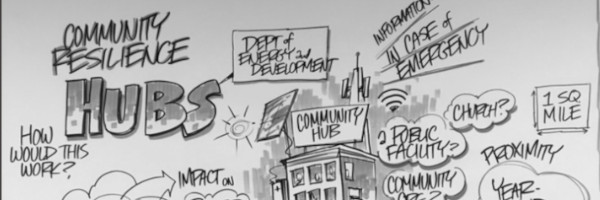Guide to Developing Resilience Hubs: Difference between revisions
No edit summary |
No edit summary |
||
| Line 1: | Line 1: | ||
{{Report | {{Report | ||
|Image=CommunityResilienceHubs.jpg | |Image=CommunityResilienceHubs.jpg | ||
|Published=2018-03-30 | |||
|Organization=USDN | |Organization=USDN | ||
|poc=Kristin Baja | |poc=Kristin Baja | ||
Revision as of 00:00, November 16, 2022
| Report | |
|---|---|
| Image | 
|
| Published | 2018-03-30 |
| Point(s) of Contact | Kristin Baja |
| Organization(s) | USDN |
| Where | Tempe AZ |

| |
Climate change is happening now. According to the National Oceanic and Atmospheric Administration (NOAA), the number of billion-dollar disasters has risen significantly over the last ten years. As the ten warmest years ever recorded have happened since 1998, so have the costliest weatherrelated disaster events. As the globe continues to warm, extreme weather events will continue to threaten and impact communities, infrastructure, and systems worldwide.
Due to a history of marginalization and disinvestment, people of color, immigrants, refugees, and lower-income populations experience increased exposure and sensitivity to climate hazards and a reduced capacity to adapt. Preparing for climate change provides opportunities to address root causes of disproportionate exposure and sensitivity to climate impacts and enhance these priority communities’ capacity to adapt.